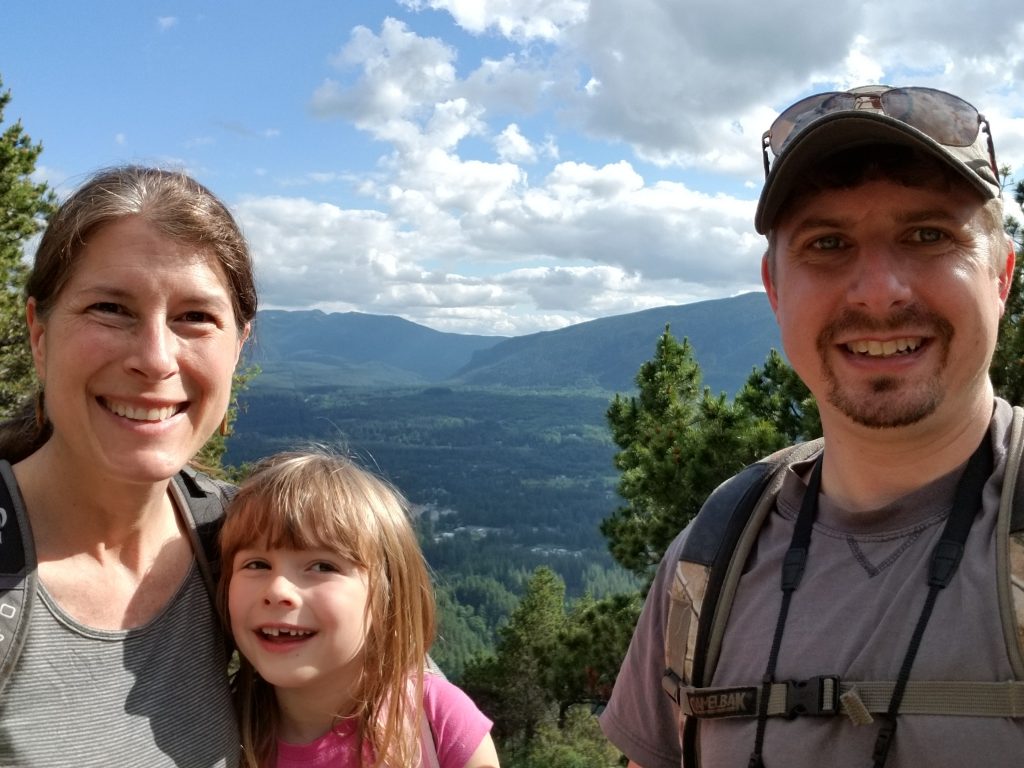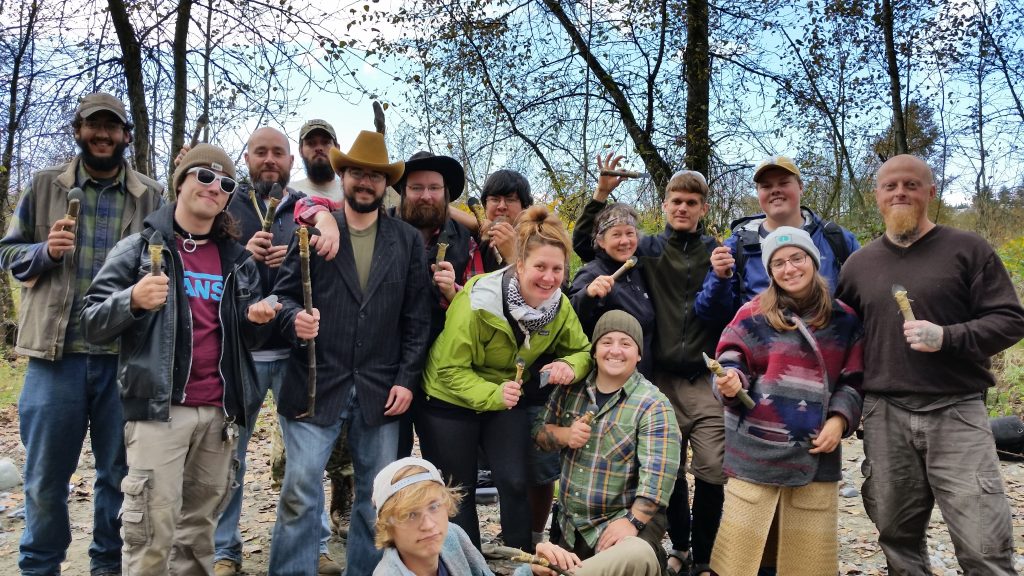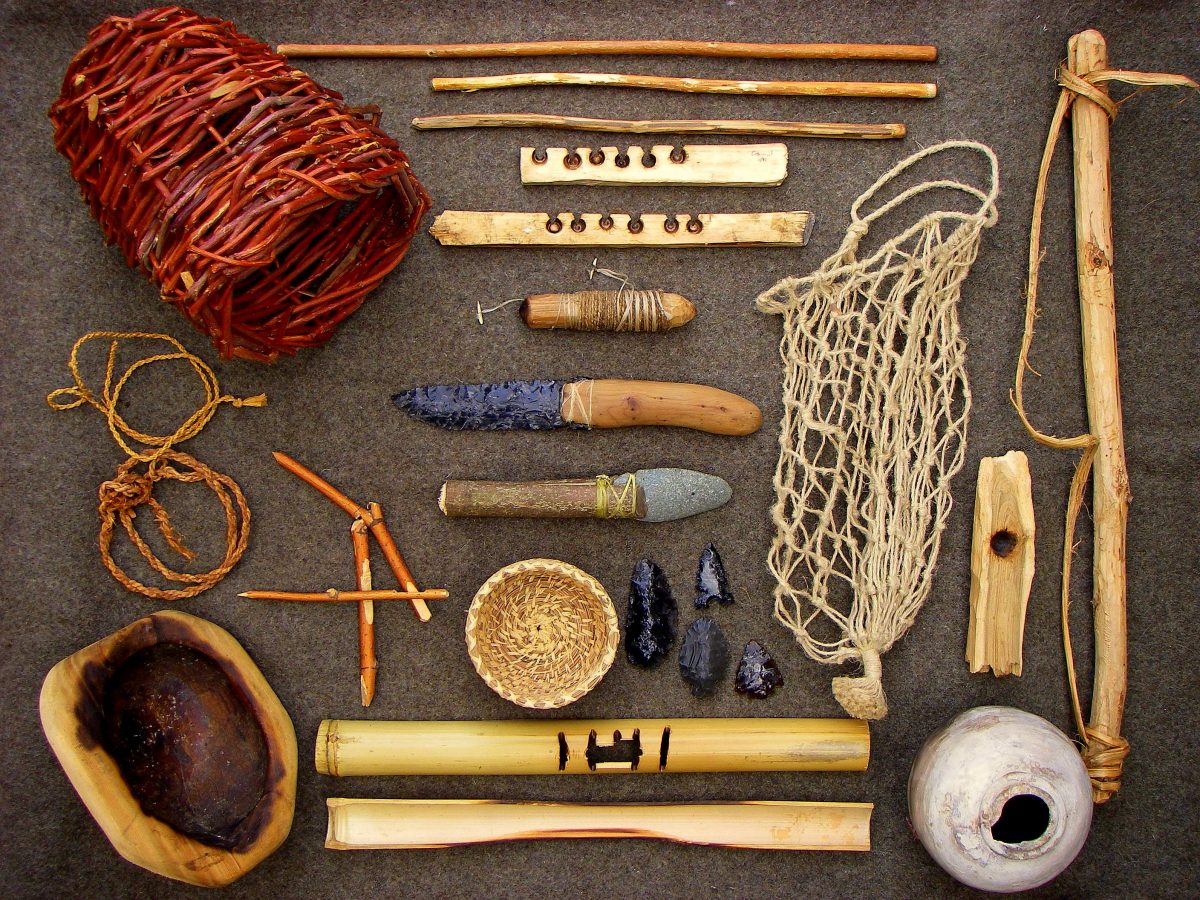This post contains affiliate links.
Stewardship of the land and its resources, Jason Knight believes, is borne of the need to survive off of them. But unlike our ancestors who had to rely on the natural world for survival, we no longer have to, leading to what he says is humans’ increasing disconnect from nature.
“If you go back to any of our ancestors or even native cultures today, I think you’ll find that most hunter-gatherer cultures, because they were interacting with the natural world for their survival every day, realized that they needed to be stewards of the resources so that there would still be fish to [harvest] the next year, there would still be deer to hunt and wild plants,” he says.
As director and co-founder of Alderleaf Wilderness College in Monroe, Wash., Knight takes a similar, stewardship approach to leading survival skills training. Instead of cutting down fresh saplings to make a bow or a shelter, for example, he encourages students to use dead sticks from the ground. But more than just adhering to Leave No Trace principles, Knight believes humans can have a positive impact on the natural world.
“If you want to weave a basket, instead of harvesting the native willow that might be struggling, harvest the invasive English ivy,” he says. “By pulling that plant out of the landscape, you’re making the habitat better for native plants to be able to survive.”
The same goes for hunting and fishing.
“I think every way we interact with the world with these wilderness skills can be done in a stewardship way.”
“Rather than harvesting a native frog, bullfrogs are invasive [in many areas of the country], so spear a bullfrog because they are eating the native frogs and native fish,” says Knight, adding that this approach helps humans have a positive impact. “I think every way we interact with the world with these wilderness skills can be done in a stewardship way that improves the habitat, improves the species and works to care for that resource so that it’s there for you in the future and future generations as well.”
For Knight, the importance of learning to survive off the land can’t be overstated. Beyond fostering a deeper connection with nature — which he believes is critical when it comes to stewardship — these skills help save lives and prevent what are often avoidable search and rescues.
Such occurrences, Knight says can usually be attributed to people being overly reliant on cell phones and navigation systems. He notes, however, that it’s typically not the prepared, trained outdoors person who finds him or herself in these situations.
“It’s usually the person who isn’t a [regular] outdoors person and went hiking, got turned around and lost and then doesn’t have anything with them and never trained in outdoor skills,” says Knight.
Survival Training & Supplies
Founded in 2006 by Knight and his wife Kerry, Alderleaf Wilderness College marries wilderness survival with permaculture and sustainable living skills. With a team of instructors, it offers courses on wilderness survival, wild edible and medicinal plants, permaculture, wildlife tracking, naturalist skills and more.

Originally from Boston, Knight has lived in the Pacific Northwest for nearly 23 years, applying his passion for the outdoors, first, as a wilderness skills guide, which he then integrated into a degree. About 20 years ago, he developed one of the first wilderness survival training programs, running it under one organization’s umbrella before going out on his own.
Alderleaf offers several course lengths, with self-paced online, weekend and weeklong classes, but its most popular program is its nine-month in-person certification course, for which it just graduated its 11th class. Courses are open to individuals and groups, and the college annually conducts survival training for Washington State Department of Ecology and Washington Conservation Corps.
“A lot of our graduates go to work on wildlife projects where they may be miles and miles in the backcountry, away from roads, trails and other people, so they need to know how to take care of themselves if there’s an emergency or if they get lost,” says Knight. “We build them survival kits that they’re able to take with them on the job and give them four days of training on the basics.”
These kits cover all the basics of survival — from food and shelter to navigation. They include a space blanket, a few methods of making fire including a ferro rod and a lighter, a compact water filtration system, compass, headlamp, a bushcraft knife and a small first-aid kit.
“We have all of that packaged up in a waterproof bag that’s meant for rafting trips, so no matter how hard it may rain on you, your equipment is not going to get destroyed,” says Knight. His favorite brand of dry bag is SealLine, which offers different sizes and types.
“Gear is good, but training trumps gear, so have the gear but also train with it — and without it.”
When it comes to a compass, he recommends getting one with adjustable declinations as the declination can change over time, even if you remain in the same spot. For a first aid kit, Knight says he likes the Ultralight and Watertight kits produced by Adventure Medical Kits, which come in their own waterproof bag, and with a compact design, survival straws — such as LifeStraw — are his water filtration device of choice.
The 10 Systems
Whereas some people refer to them as the 10 essentials of wilderness survival, Knight likes to think of them as systems: shelter, fire, tools, water, food, clothing, navigation, illumination, sun protection and first aid. “When you think in terms of systems,” he says, “you can adjust for how much space you have.”
He recommends having several survival kits, one for each area of your life.
“In your house, you could have a big backpack full of all kinds of fancy items like a tent and a sleeping bag, but what you carry in your car might be smaller. It might not be a tent and a sleeping bag; maybe it’s a wool blanket and some other things,” says Knight. “You can also adjust the 10 systems … for a tiny kit you carry in your backpack on a day hike. Instead of bringing a sleeping bag, tent or even a little blanket, you can just bring an emergency space blanket.”
No matter what, he says he always carries with him a lighter and a knife with a ferro rod embedded in it — like the Mora bushcraft knife. “A survival kit can be as simple as that,” Knight says.
But it’s not enough just to come prepared with the right gear; you also need to know how to use it. “Gear is good, but training trumps gear, so have the gear but also train with it — and without it,” he says.

Knowing how to use a compass or read a topographical map are critical skills to have, especially in the event that you get lost. People too often make the mistake of relying on their phone or GPS, forgetting that those items can break, their batteries can die and they can easily be forgotten or lost. “So, we train all of our students on how to use a compass and how to read a map,” Knight says.
But even those items can be forgotten or lost, thus he also advises having some natural navigation skills — being able to use the sun, stars and landmarks as a guide.
Although he says the best thing you can do if you find yourself lost in the wilderness without any supplies is to stay put and build a large fire, you’ll still need some basic survival skills to stay alive until you’re rescued. That’s where knowledge of how to build a shelter, make a fire, find food, stay warm and protect yourself will be invaluable.
Knight says a debris hut shelter is one of the simplest, most effective shelters that anyone can learn how to build. It can be made out of anything available: leaves, moss, ferns, bark or any other forest debris. Using a dead tree or limb, begin by stacking other limbs and large sticks against it, then cover the ground on the inside with a thick layer of debris.
“You want to have three feet of debris on all sides of you, and when you crawl in, you want to crawl on top of the debris, not on the ground, because the ground will zap your heat up,” Knight says. “It’s basically like a giant squirrel nest, a human-sized squirrel nest. They’re not always super comfortable, but you’ll survive the night.”
Making a primitive fire can be done using a bow drill, a rotational hand-operated tool — which you can create using a stick and a string — used to generate friction. Of all the survival fire-making techniques, Knight says bow drill is the least difficult.
For water, Knight says it’s important to come prepared with a metal water bottle, which makes filtering it simple as it can be easily boiled right in the bottle. “Of course, the primitive way to filter water is to build a container from a burned out bowl and boil water in it [using] hot rocks [from] a fire,” he says.
While Knight encourages people to bring extra layers and wear wool as opposed to cotton when in the outdoors, if you are lost and don’t have these things and temperatures are low, you can create your own insulation. “You can find dry leaf litter, pine needles or ferns and stuff them in between your layers to create extra insulation,” says Knight. Similarly, mud, clay and certain plant pollens can be used to protect your skin from the sun.
Of all the survival tools, Knight says a knife is the most important one. He recommends one with a fixed blade as it can stand up to tougher tasks. However, without a knife, he says it’s important to know how to make a stone tool.
For food, there are several edible plants that can be found in abundance across the country. “The inner bark of conifer trees is a really reliable survival food, and that’s [one] you can find almost anywhere in the country, no matter what season,” says Knight. “But it’s definitely a survival food; it’s not a food you’re going to choose to harvest.”
However, he urges caution as one species of conifer is poisonous: the western yew. These trees, which are fairly uncommon, are rather short at 5 to 15 feet tall and have red berries.
Other pine trees, like the Douglas fir, spruce and western hemlock — the tree, not the plant, which is poisonous — also have edible inner bark, Knight says. Acorns are a good option for a high-protein, high-calorie food but need to be boiled or leeched in a stream overnight. And grasses are another widely available option; however, only a small section of the plant is edible.
“We encourage our students [to not] just go from zero to 60 — read a book and then try to walk out there with nothing. That’s dangerous. Really gain the knowledge and practice the skills one by one.”
“You don’t want to eat the green parts because they’re indigestable, and you don’t want to eat the roots because they’re too fibrous,” says Knight. “But there’s a little section of the grass where the green leaves meet the roots [where] there’s [what looks] like a tiny potato. It’s called the corm and that you can eat raw or cook.”
In addition to telling someone where you are going and having a backup plan when you are headed into the backcountry, Knight recommends that everyone have some basic survival training, whether from a class or a book. However, he says, “there’s nothing that replaces actually doing it” as practice leads to confidence.
“The first step is to learn about the skills, gain the information and knowledge, and then go practice them one by one — but not in a situation where you need them,” says Knight. “We encourage our students [to not] just go from zero to 60 — read a book and then try to walk out there with nothing. That’s dangerous. Really gain the knowledge and practice the skills one by one. When you do go out to try [your skills], go with a friend and bring backup gear with you. Do it in a safe way.”
In learning these skills, Knight says, people often gain much more than they went in for.
“I think when people learn about wilderness survival skills, they gain a more meaningful relationship with the outdoors,” he says. “For a lot of folks, that then leads to understanding why we’d want to take care of it and a greater desire to [do so].”





